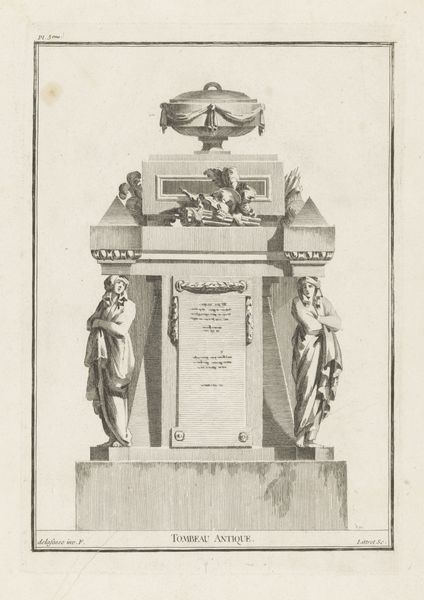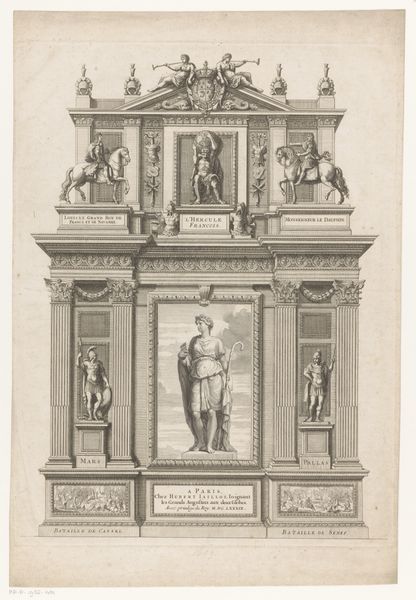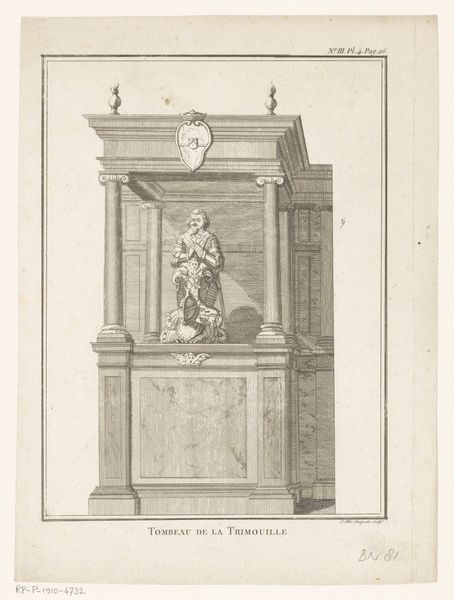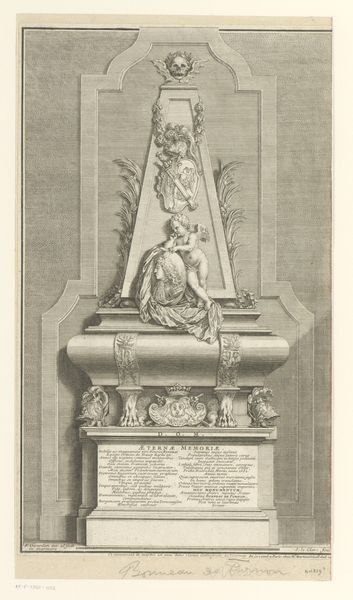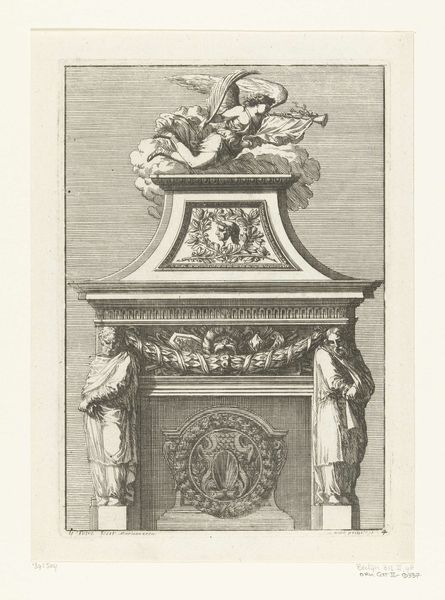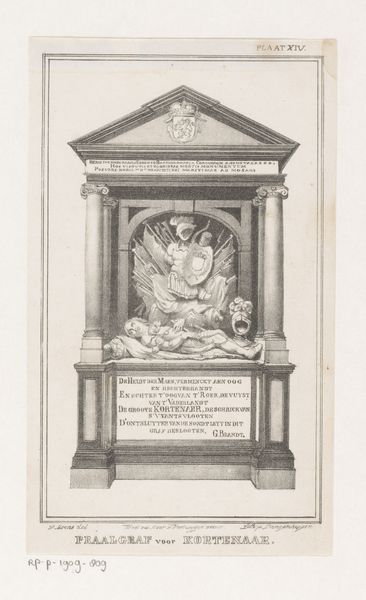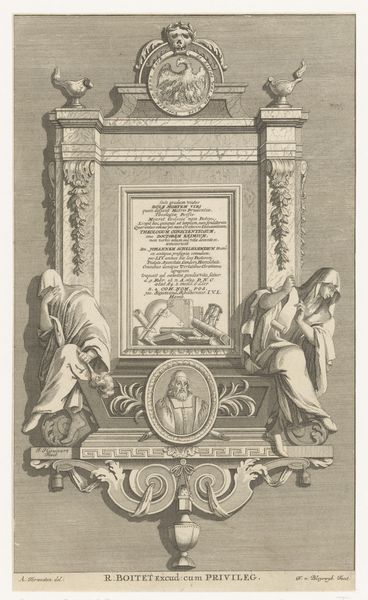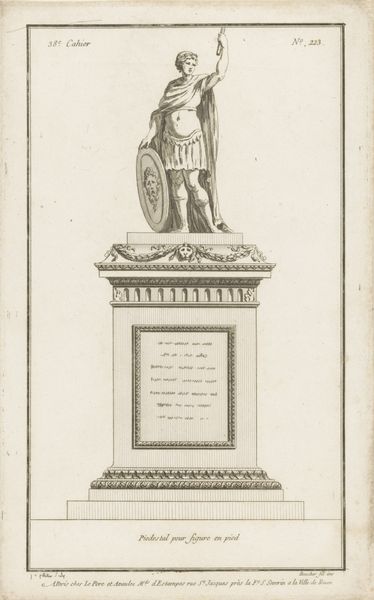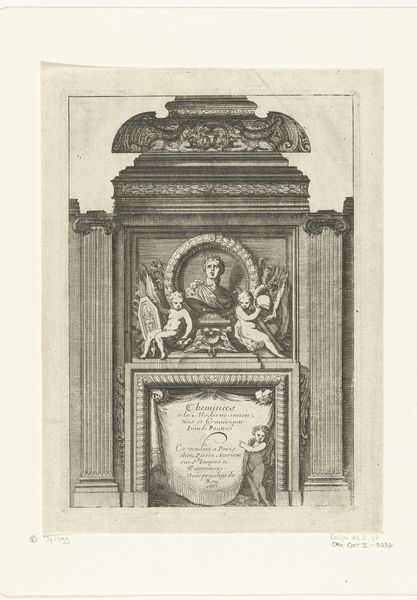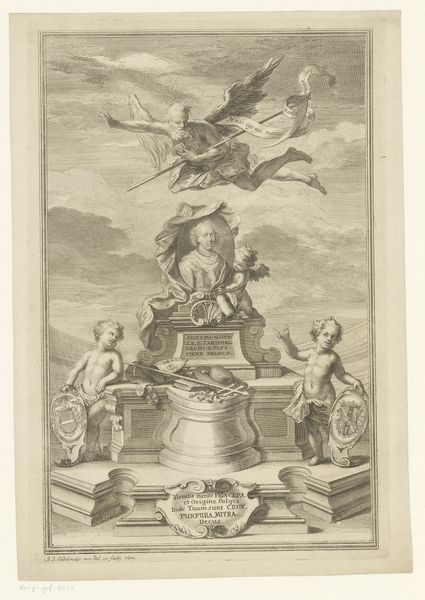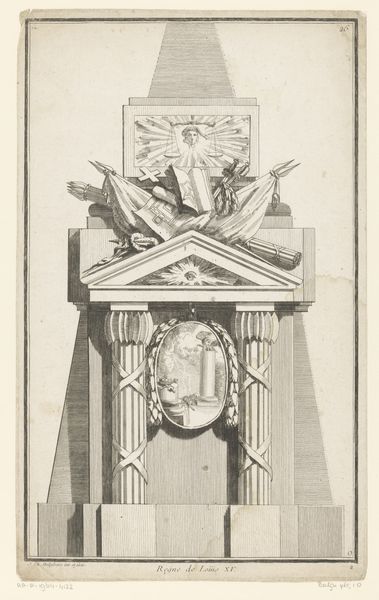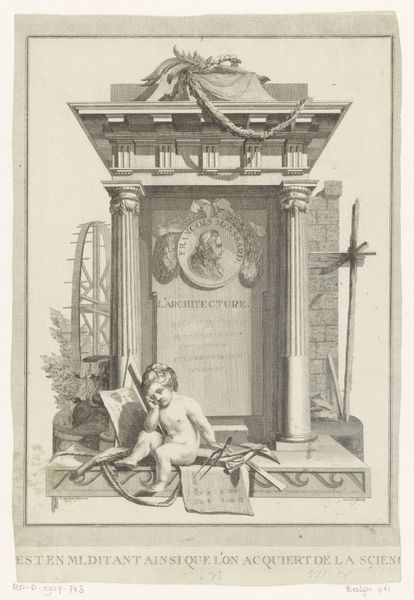
drawing, print, paper, engraving
#
drawing
#
allegory
#
baroque
# print
#
paper
#
line
#
history-painting
#
engraving
Dimensions: height 266 mm, width 182 mm
Copyright: Rijks Museum: Open Domain
Editor: Here we have Jan Caspar Philips' 1713 engraving, a design for the tomb of Hugo de Groot, or Grotius. The profusion of allegorical figures is really striking, almost overwhelming in their detail. How should we approach this from a less… purely aesthetic angle? Curator: The materiality of this print – paper and engraving – is key. Consider the labor involved: the skilled hand meticulously etching the design, reproducing an image meant to glorify a man through the spectacle of a proposed tomb. But consider, too, the social function: engravings allowed for wide dissemination, making this “design” more broadly “consumed” than the physical tomb itself would be. Editor: So, it’s less about honoring Grotius and more about... circulating a concept? Was Philips' print successful? Curator: Precisely! We should investigate the political motivations behind circulating images of funerary monuments, beyond just personal commemoration. Look at the allegorical figures. They’re not just aesthetically pleasing, they embody power structures and specific narratives, weren't they? Can we explore what those are here, or what other tomb designs of this era this references? Editor: Right. There's a body reclining at the bottom and angels all around him, each trying to hand objects to him, suggesting ideas of morality, reward, or… scholarly accolades perhaps? It's clearly staged. Curator: Exactly. And how does the material process—engraving on paper—affect the dissemination of such propaganda and affect later viewership, interpretation and even its own modern interpretation and understanding as *art* rather than printed news or popular press? Does the medium become a core part of its meaning, a commodification? Editor: I suppose in that context we should consider not just its design, but the very accessibility and reproduction as essential parts of what the design is 'for.' So, in the context of it being mass produced, it does have revolutionary, almost rebellious merit, I assume? Curator: In a sense, yes. Thinking about the labor and materials transforms the image from a simple tribute into a complex statement about social power and the evolving consumption of printed material. I like your perspective on it. Editor: Thanks, I certainly learned to see more in this single print!
Comments
No comments
Be the first to comment and join the conversation on the ultimate creative platform.
